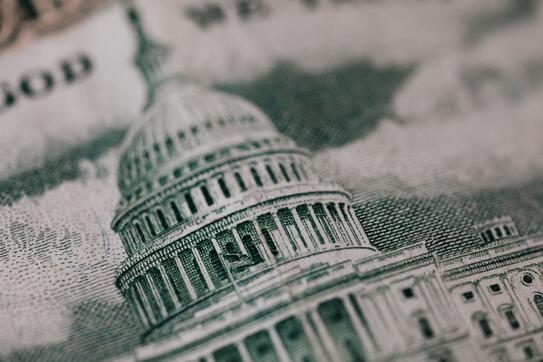Although it seems like ancient history, it hasn't been that long since economies around the world began to close down in response to the COVID-19 pandemic. Early in the crisis, most people anticipated a quick V-shaped recovery, on the assumption that the economy merely needed a short timeout. After two months of tender loving care and heaps of money, it would pick up where it left off.
It was an appealing idea. But now it is July, and a V-shaped recovery is probably a fantasy. The post-pandemic economy is likely to be anemic, not just in countries that have failed to manage the pandemic (namely, the United States), but even in those that have acquitted themselves well. The International Monetary Fund projects that by the end of 2021, the global economy will be barely larger than it was at the end of 2019, and that the US and European economies will still be about 4% smaller.
The current economic outlook can be viewed on two levels. Macroeconomics tells us that spending will fall, owing to households' and firms' weakened balance sheets, a rash of bankruptcies that will destroy organizational and informational capital, and strong precautionary behavior induced by uncertainty about the course of the pandemic and the policy responses to it. At the same time, microeconomics tells us that the virus acts like a tax on activities involving close human contact. As such, it will continue to drive large changes in consumption and production patterns, which in turn will bring about a broader structural transformation.
We know from both economic theory and history that markets alone are ill suited to manage such a transition, especially considering how sudden it has been. There's no easy way to convert airline employees into Zoom technicians. And even if we could, the sectors that are now expanding are much less labor-intensive and more skill-intensive than the ones they are supplanting.
We also know that broad structural transformations tend to create a traditional Keynesian problem, owing to what economists call the income and substitution effects. Even if non-human-contact sectors are expanding, reflecting improvements in their relative attractiveness, the associated spending increase will be outweighed by the decrease in spending that results from declining incomes in the shrinking sectors.
Moreover, in the case of the pandemic, there will be a third effect: rising inequality. Because machines cannot be infected by the virus, they will look relatively more attractive to employers, particularly in the contracting sectors that use relatively more unskilled labor. And, because low-income people must spend a larger share of their income on basic goods than those at the top, any automation-driven increase in inequality will be contractionary.
On top of these problems, there are two additional reasons for pessimism. First, while monetary policy can help some firms deal with temporary liquidity constraints – as happened during the 2008-09 Great Recession – it cannot fix solvency problems, nor can it stimulate the economy when interest rates are already near zero.
Moreover, in the US and some other countries, “conservative” objections to rising deficits and debt levels will stand in the way of the necessary fiscal stimulus. To be sure, the same people were more than happy to cut taxes for billionaires and corporations in 2017, bail out Wall Street in 2008, and lend a hand to corporate behemoths this year. But it is quite another thing to extend unemployment insurance, health care, and additional support to the most vulnerable.
The short-run priorities have been clear since the beginning of the crisis. Most obviously, the health emergency must be addressed (such as by ensuring adequate supplies of personal protective equipment and hospital capacity), because there can be no economic recovery until the virus is contained. At the same time, policies to protect the most needy, provide liquidity to prevent unnecessary bankruptcies, and maintain links between workers and their firms are essential to ensuring a quick restart when the time comes.
But even with these obvious essentials on the agenda, there are hard choices to make. We shouldn't bail out firms — like old-line retailers — that were already in decline before the crisis; to do so would merely create “zombies,” ultimately limiting dynamism and growth. Nor should we bail out firms that were already too indebted to be able to withstand any shock. The US Federal Reserve's decision to support the junk-bond market with its asset-purchase program is almost certainly a mistake. Indeed, this is an instance where moral hazard really is a relevant concern; governments should not be protecting firms from their own folly.
Because COVID-19 looks likely to remain with us for the long term, we have time to ensure that our spending reflects our priorities. When the pandemic arrived, American society was riven by racial and economic inequities, declining health standards, and a destructive dependence on fossil fuels. Now that government spending is being unleashed on a massive scale, the public has a right to demand that companies receiving help contribute to social and racial justice, improved health, and the shift to a greener, more knowledge-based economy. These values should be reflected not only in how we allocate public money, but also in the conditions that we impose on its recipients.
As my co-authors and I point out in a recent study, well-directed public spending, particularly investments in the green transition, can be timely, labor-intensive (helping to resolve the problem of soaring unemployment), and highly stimulative – delivering far more bang for the buck than, say, tax cuts. There is no economic reason why countries, including the US, can't adopt large, sustained recovery programs that will affirm — or move them closer to — the societies they claim to be.
Copyright: Project Syndicate, 2020.


